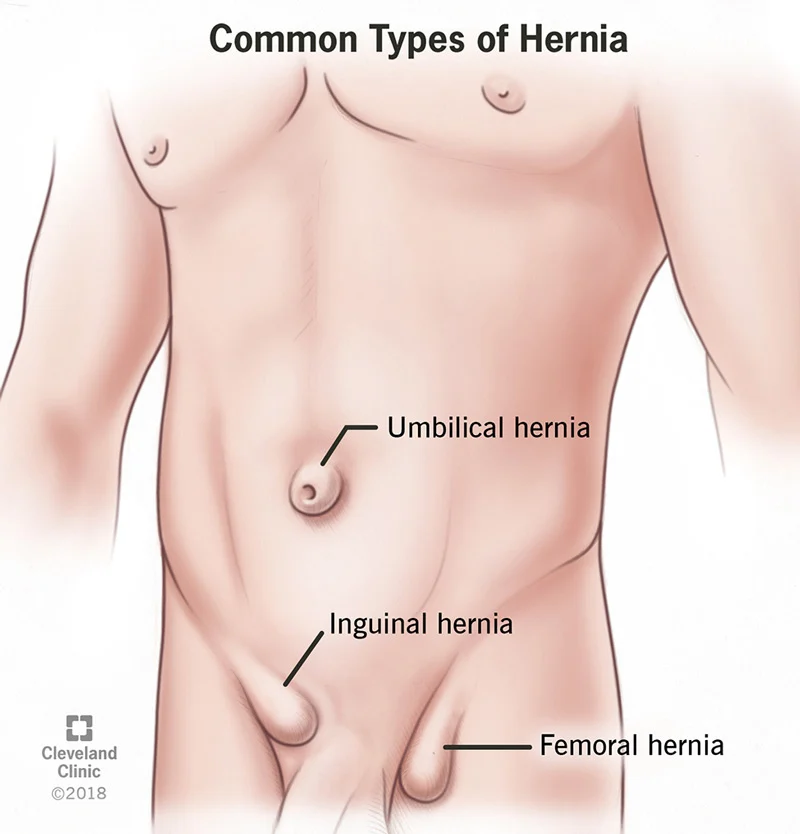
Hernia surgery
What is a hernia?
A hernia occurs when part of your insides bulges through an opening or weakness in the muscle or tissue that contains it. Most hernias involve one of your abdominal organs pushing through one of the walls of your abdominal cavity. Hernias can occur gradually as you get older and regular wear and tear on your muscles begins to add up. They can also result from an injury, surgery or birth disorder.
What are some common hernia locations?
You may get a hernia:
In your lower chest through your diaphragm.
In your groin through your lower abdominal wall.
Along the front midline of your abdomen.
Through a former abdominal surgery incision.
What are some of the different types of hernias?
Specific types of hernias include:
. Inguinal hernia. Inguinal hernias are the most common type, accounting for 75% of all hernias. They mostly affect men or people assigned male at birth (AMAB). They happen when part of your bowel protrudes into your inguinal canal, a passageway that runs down your inner thigh.
. Femoral hernia. A femoral hernia is a less-common type of groin hernia that occurs in the femoral canal, which runs underneath the inguinal canal. Fatty tissue may poke through.
. Hiatal hernia. A hiatal hernia is another common type of hernia that you acquire during your lifetime. It happens when the opening in your diaphragm — where your esophagus passes through — widens, and the top of your stomach pushes up through the opening into your chest.
. Congenital diaphragmatic hernia. A congenital diaphragmatic hernia is a serious birth defect in which the diaphragm doesn’t close all the way during fetal development. It can cause abdominal organs to slip up into the chest cavity while the organs are still growing, crowding the lungs.
. Incisional hernia. An incisional hernia occurs when tissue protrudes through a former incision in your abdominal wall that weakened over time. It’s a common side effect of abdominal surgery.
. Umbilical hernia. An umbilical hernia occurs when part of your intestine pokes through an opening in your abdominal wall near your belly button. Most umbilical hernias are congenital (present from birth).
. Ventral hernia. A ventral hernia is any hernia that occurs through the front wall of your abdomen. It includes umbilical hernias and incisional hernias. An “epigastric hernia” is a ventral hernia above the belly button.
. Perineal hernia. A perineal hernia occurs when organs or tissue push through an opening or weakness in your pelvic floor into your abdominal cavity. These hernias are relatively rare.
How common are hernias?
. Overall, hernias are common, though some types are more common than others. Inguinal hernias affect around 25% of all men or people assigned male at birth. Hiatal hernias affect around 20% of people in the U.S. and 50% over the age of 50. Congenital hernias occur in about 15% of newborns, mostly umbilical. Incisional hernias make up about 10% of hernias, and all other types make up another 10%.
How serious is a hernia?
Most aren’t serious, but they can be. They can also become more serious over time. A hernia becomes serious when it gets stuck in the hole that it’s pushed through and can’t go back in. This can become painful, and in severe cases the tissue can become cut off from blood supply, causing necrosis (tissue death). Since hernias tend to worsen over time, most will need surgical repair sooner or later.